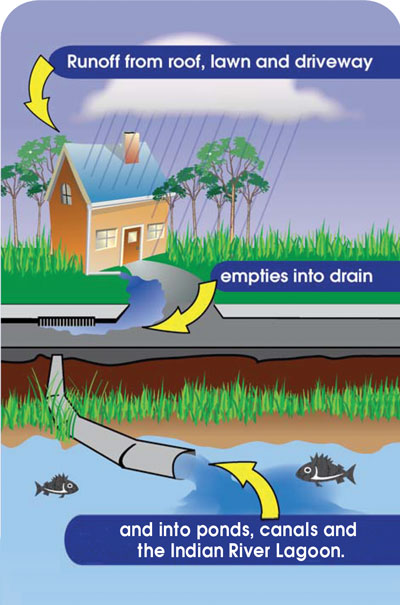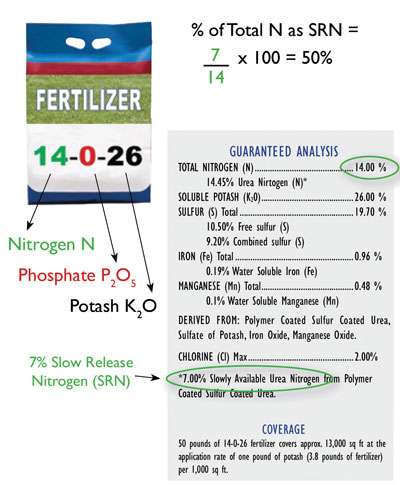What Is the Indian River Lagoon?
Designated An Estuary of National Significance in 1990 by Congress through the Clean Water Act
- We call it “The River” but it’s actually not a river. There is no flow – only wind effects, and tidal fluctuations near the inlets. The pollutants we put in the Lagoon stay in the Lagoon.
- The Lagoon is very shallow, averaging about four feet deep so its sediments are easily stirred by wind.
- The Lagoon has five widely spaced inlets that allow a limited exchange of ocean water and aquatic wildlife.
- The canals emptying into the Lagoon were created to drain the inland areas for farming. Now those canals are carrying urban stormwater into the Lagoon.
Lagoon Health:
- Seagrass coverage is the primary indicator of Lagoon health; it is the foundation of the Lagoon’s food web. Since 2011, the Indian River Lagoon has lost 63% of its total acres of seagrass compared to 2009. This represents a loss of 47,000 acres of seagrass.
- Habitat loss of seagrass beds, mangroves, oyster reefs and wetlands is affecting the viability of the estuarine and marine fisheries, as well as bird and manatee health.
- Our Lagoon has been called one of the most biologically diverse estuaries in North America because of the huge variety of living things calling it home. Many species use the Lagoon’s protected waters as nurseries for their young. The nursery areas are scarce and threatened.
- 75% (over 40,000 acres) of the Lagoon’s wetlands and salt marshes have been lost or altered due to development or mosquito control practices. These marshes are important fish nurseries and serve as filters to improve water quality. Many of these altered wetlands have been reconnected to the Lagoon, offering improved marsh-estuary exchanges for fisheries while still providing mosquito control benefits.
Our Economy:
- The Lagoon’s economic benefits and value are estimated at over $3.7 billion annually to the Treasure and Space Coast regions and the state.
- The Lagoon supports 15,000 jobs producing goods and services equaling $1.6 billion in sales of recreational goods and services, investments in research, restoration and education projects and activities, and sales from commercial fish landings.
The Problems Facing the Lagoon
Stormwater Runoff


Pollution prevention is up to you!
Did you know that stormdrains and canals are NOT connected to treatment plants? In the Treasure Coast Region, the storm system flows directly into the Lagoon. Never use the canals or stormdrains as trash receptacles.
- Keep yard clippings and chemicals off streets and drives
- Pick up pet waste
- Wash cars on lawn or at commercial facility
- Dispose of hazardous wastes through County Convenience Centers– including paint cans, electronics, aerosol cans, used motor oil, pesticides, batteries, fluorescent light bulbs, solvents, fertilizers
For information about recycling and disposal of hazardous wastes, please visit or contact the following county departments:
Brevard County Solid Waste Management, 321-633-2042
Indian River County Solid Waste Disposal District, 772-770-5112
Martin County Solid Waste Division, 772-288-5772
St. Lucie County Solid Waste, 772-462-1768
Volusia County Solid Waste Division, 386-257-6021

Vehicles and Boats
One gallon of motor oil can contaminate one MILLION gallons of water!
- Keep cars and boats running properly
- Use bio-degradable cleaners on boats
- Never leave trash or human/pet waste on islands
- Never release boat sewage into the lagoon
- Report observed spills 24/7: 1-800-320-0519
For more information, visit the Florida Department of Environmental Protection's "Clean Marina Program" at: www.dep.state.fl.us/cleanmarina.
Septic System Leaching
There are about 36,864 septic systems in operation in Indian River County. 17,554 were installed prior to rule changes requiring a 24-inch separation from the water table, and at least a 50-foot setback from surface water.
900 septic systems are within the city limits on the barrier island alone; 83% of which are not in compliance with current septic standards for new construction. These may have a 6-inch or less separation from the water table and may be 25 feet or closer to the lagoon.
Septic systems are designed to catch solid waste and to slowly percolate liquid waste through the surrounding soil. Approximately 265 gallons of wastewater per day per household leaches into ground water, carrying nutrients from the food we eat, along with other chemicals (detergents and medications) that might have entered our septic system.
The variables that determine how much pollution enters our water table and eventually the lagoon are:
- elevation of the system above ground water
- type of soil which is serving as a filter
- amount of rain
- amount of liquids entering the system

You can help clean up the lagoon:
- Organize your neighbors to request sewer installations in your neighborhood
- Pump out your septic system every 3-5 years
- Never drive or park over the septic system
- Plant only groundcovers over and near the drainfield
- Flush only human waste –not disposable diapers, sanitary supplies, paper towels
- Never flush toxic waste such as medicine, oil, grease, paint, pesticides, cleaners
- Consider composting instead of using a garbage disposal
- Spread laundry loads over the week
- Conserve water use to lessen septic leaching
For more information, visit the Florida Department of Health's "Onsite Sewage Programs" at: www.myfloridaeh.com/ostds.

Never dispose of medications by flushing them down the toilet or drain!
Dispose of unwanted medications as solid waste
- Mark out your name and prescription number
- Add water or soda to dissolve pills
- Add cat litter or dirt to liquids
- Tape closed and dispose of in trash
- Do not put in recycle bin
OR
Find medication disposal sites and events at: www.dep.state.fl.us/waste/categories/medications, or contact your county sheriff's office.
Nutrient Pollution
The Indian River Lagoon is experiencing nutrient pollution, caused by fertilizer and other nitrogen sources. Fertilizer is not a problem when it’s used properly. If we use too much or apply it at the wrong time, it can easily wash into storm drains and flow untreated into the canals, all of which lead
to the Lagoon.
Just like in our yards, fertilizer in the Indian River Lagoon makes plants grow; but in water, extra fertilizer means too much algae. The algae cloud the water, stopping the sunlight from reaching the seagrass growing on the bottom. These seagrasses are the foundation of all life around the Lagoon,
supporting fish, birds, manatees, sea turtles & dolphins.
For more information:
The Guide to Florida Friendly Landscaping: www.floridayards.org
Guide to Waterwise Landscaping: www.SJRWMD.com/waterconservation

Smart Fertilizing
- Fertilize in the spring and fall – not in the rainy season from June through September.
- Reuse water may contain high amounts of nutrients. Fertilizers may not be needed. Check with your water supplier.
- Reduce the amount of lawn by planting native or Florida Friendly plants that need less water, fertilizer and other lawn chemicals.
- Newly installed landscapes cannot efficiently use nitrogen; do not apply nitrogen for the first 30 days.
- Don’t blow leaves or clippings into the road or any body of water–leave them on your lawn. They can supply up to 50% of the nitrogen that your grass needs.
- Use a deflector shield on your spreader so that you spread fertilizer only where you need it.
- Pump some iron. Use Florida Friendly yard products that contain iron and other micronutrients to green up your lawn during the summer.
- Watch the weather! Rainstorms don’t water in fertilizer they wash it away, wasting your money and polluting our water.
- Use less irrigation – fewer chemicals and nutrients will wash into the lagoon.
- Reduce the amount of pesticides used.
- Sweep it up. Whisk any fertilizer granules that fall onto sidewalks, streets or drives back on the landscape.
- Keep fertilizer at least 10 feet away from any wetland or body of water.
- Just Say No to Phosphorous (P): The Indian River region is naturally rich in phosphorous.
- Avoid using ‘weed & feed’ products.
- If you do use fertilizer, use slow release nitrogen (SRN) fertilizer. Slow-release provides nourishment over a longer period, saving you money.
What to look for on your fertilizer label:

DEADLINE: JANUARY 1, 2014
Florida Statute Chapter 428.1562, requires all commercial fertilizer to obtain the Limited Commercial Fertilizer Applicator's Certification which includes completion of Best Management Practices Course. Training information and the list of certified professionals by county is available at: http://fyn.ifas.ufl.edu/professionals/BMP_overview.htm.

The information provided on this website was produced by Judy Orcutt and the Indian River Lagoon Coalition. The information may be used and reprinted, with credit to the Indian River Lagoon Coalition. You may also download this same information as a four panel/quad-fold brochure, formatted for 8 1/2 x 14 inch (legal) size paper, by clicking here. In order to view the brochure you need to have the free Adobe Acrobat Reader program installed on your computer. For more information and to download the program, visit the Adobe website at www.adobe.com/products/reader.html.
The background image of the Indian River Lagoon is courtesy of John Massung of IndianRiverByAir.com.







